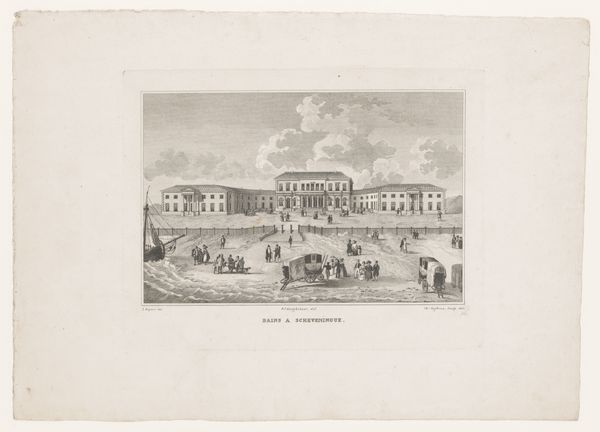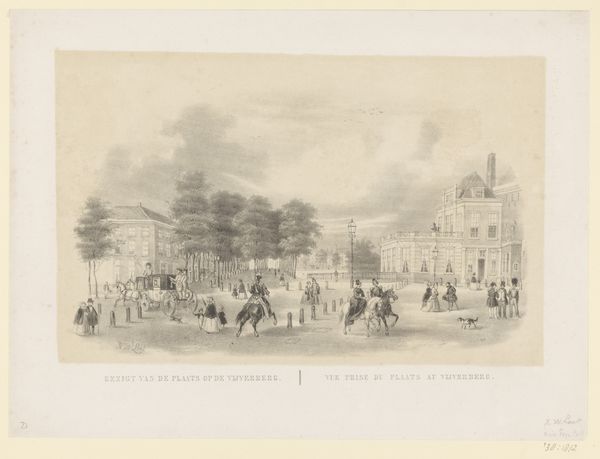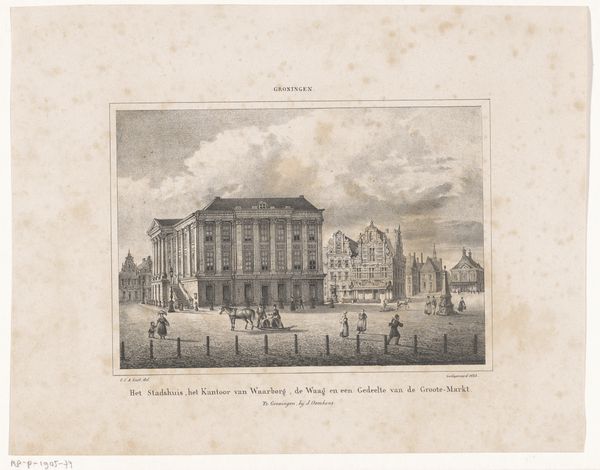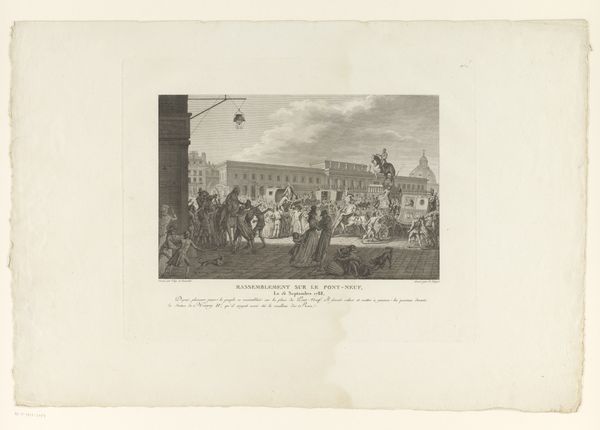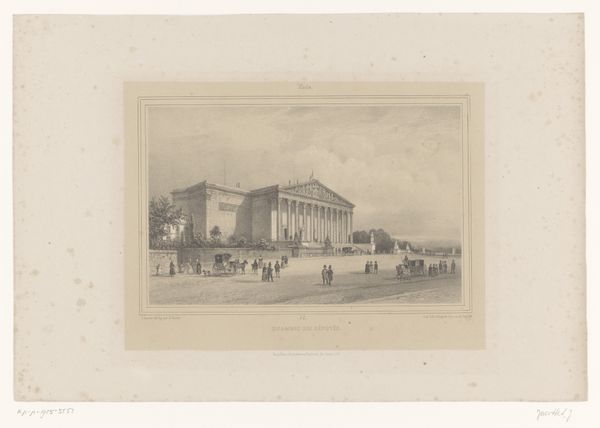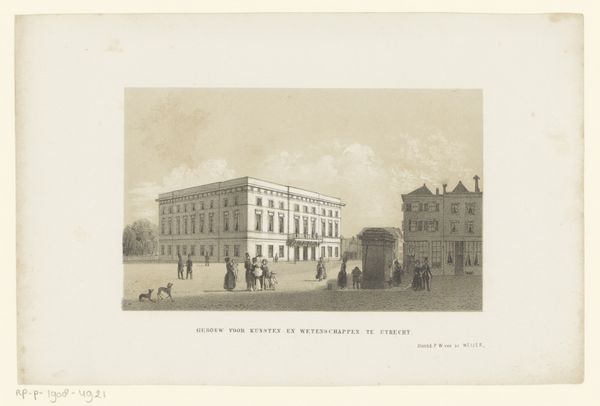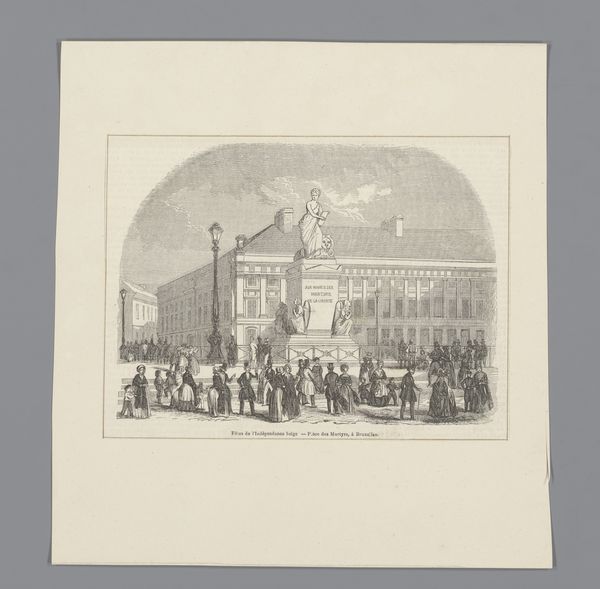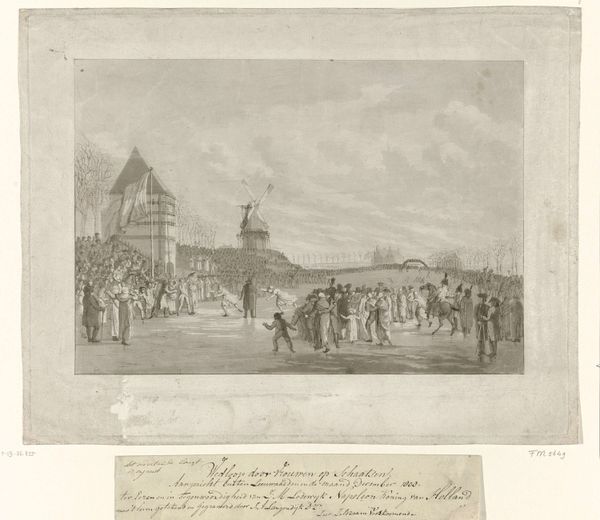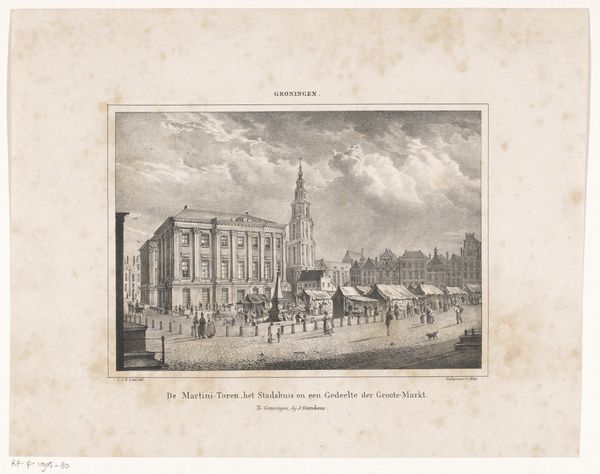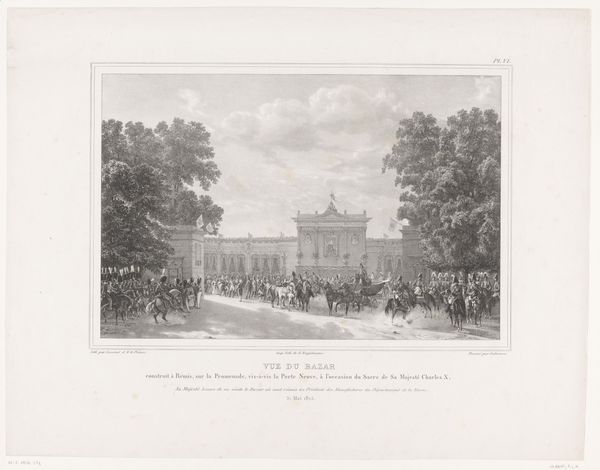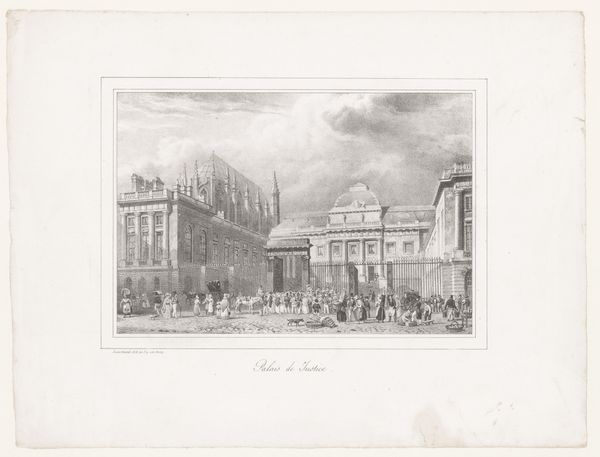
print, engraving, architecture
# print
#
romanticism
#
cityscape
#
engraving
#
architecture
Dimensions: height 228 mm, width 187 mm
Copyright: Rijks Museum: Open Domain
Editor: Here we have an engraving from 1841 titled "View of Buckingham Palace." It feels so… distant, like a stage set more than a living, breathing place. What do you see in this piece? Curator: I see a powerful image of constructed identity. The Palace isn't just architecture; it's a symbol of nation, of empire. Consider how the engraver meticulously renders the facade, giving it a monumental, almost theatrical presence. But the real key lies in the figures. They are meticulously arranged, almost like actors on this national stage. The uniforms, the carriages – these aren’t just details. What feelings are evoked by this arrangement of players in front of the grand edifice of Buckingham Palace? Editor: A carefully orchestrated power dynamic, perhaps? A performance of royalty for the public. Curator: Precisely. The print subtly reinforces the established social hierarchy. It freezes a moment, presenting the enduring symbolic relationship between sovereign and subject. How might the average citizen viewing this image in 1841 have interpreted these carefully rendered figures? Editor: I imagine it reinforced a sense of order, a feeling of national pride. And perhaps, even, a sense of belonging. Curator: Exactly! And consider the symbolic weight of the flag atop the Palace; an ever present symbol that unites a nation. Through carefully chosen imagery, the print transforms mere stone and brick into a powerful representation of British identity and its projection of power. Editor: It's amazing how much the image conveys without saying a word, revealing hidden layers through recognizable iconography. Curator: Yes. Each element resonates with culturally understood meanings and enduring significance to British national identity.
Comments
No comments
Be the first to comment and join the conversation on the ultimate creative platform.
